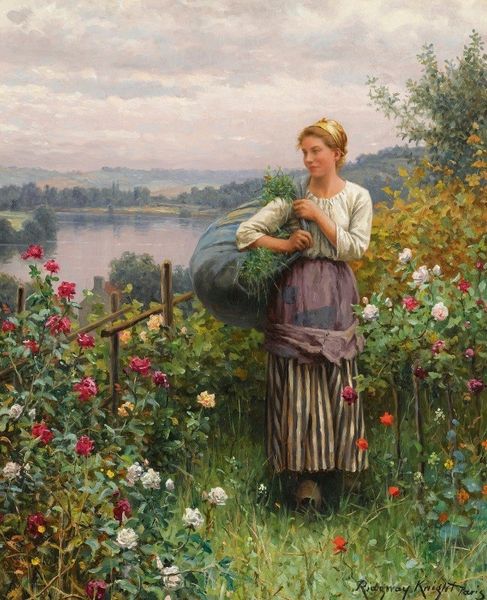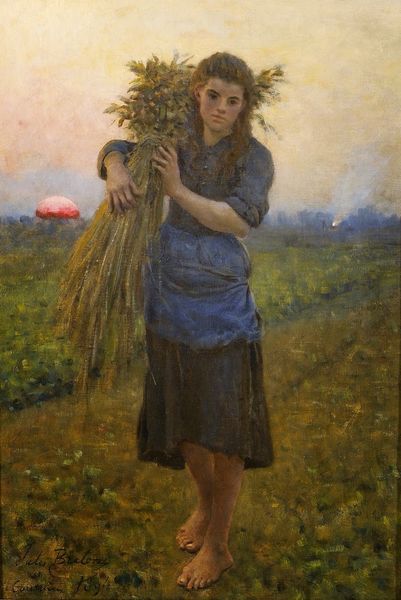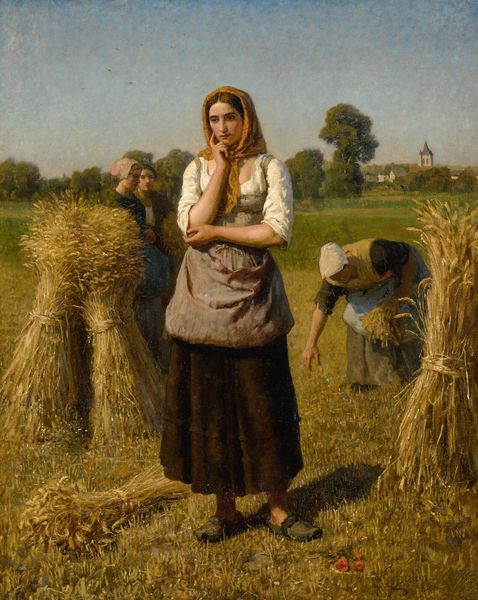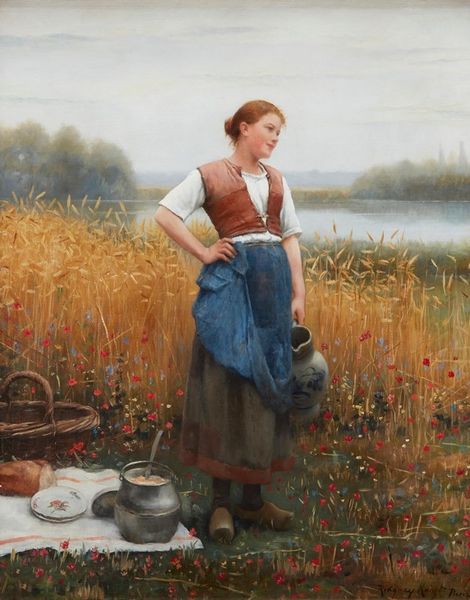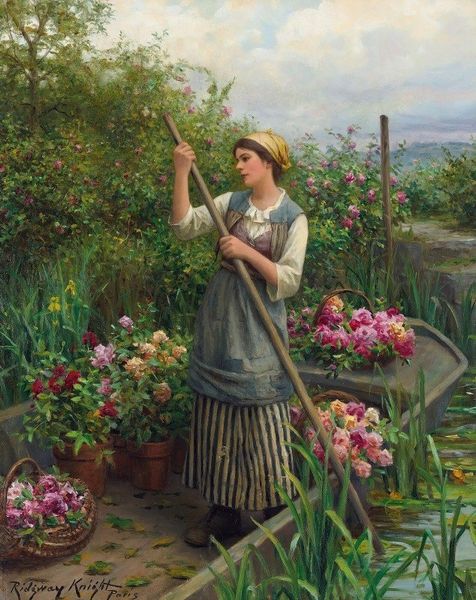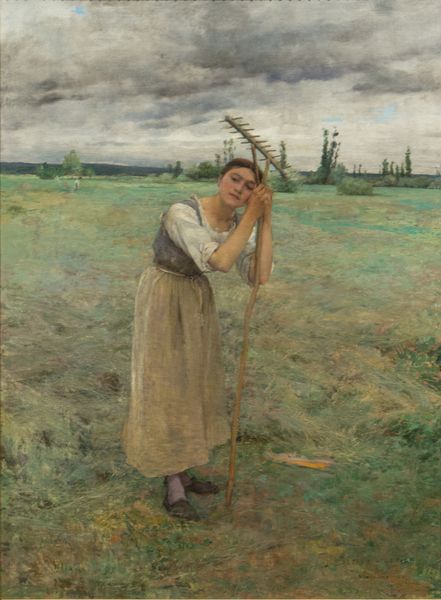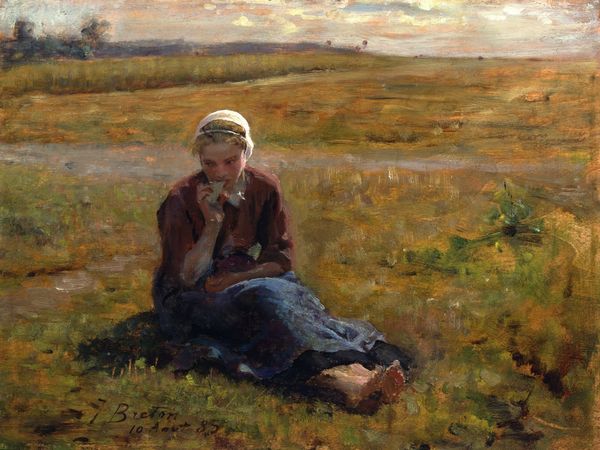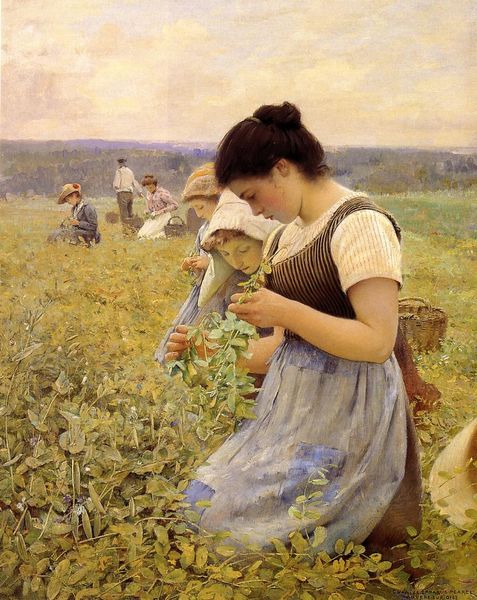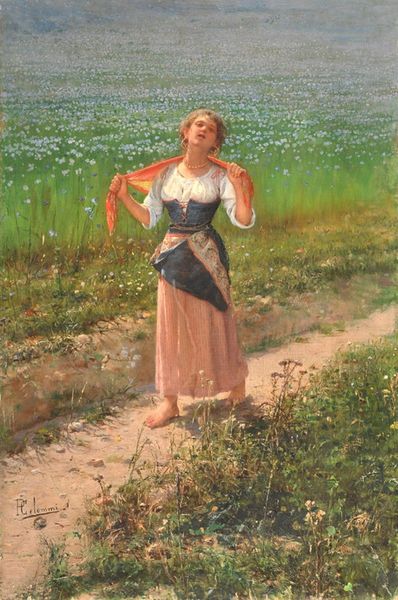
painting, plein-air, oil-paint
#
portrait
#
figurative
#
painting
#
impressionism
#
plein-air
#
oil-paint
#
landscape
#
oil painting
#
genre-painting
#
realism
Copyright: Public Domain: Artvee
Curator: Before us, we see "Jeannine Gleaning," a plein-air painting by Daniel Ridgway Knight. He captures a lone female figure in a vibrant field of grain and wildflowers. My immediate reaction is one of tranquility, balanced by a subtle melancholic undercurrent. Editor: That feeling is interesting, and one might also consider Knight's choices that have placed this image firmly within a visual vocabulary of the time. Focusing on form, the composition is relatively straightforward, wouldn't you agree? The figure dominates the foreground, bisecting the plane, with receding bands of color creating depth. Curator: Yes, that division creates structure. But consider also how this contributes to its accessibility as an image within the broader socio-political climate of late 19th-century Europe. Rural life, romanticized peasantry… it’s feeding into certain prevailing narratives, particularly the mythic importance of the rural and a specific visual language being cultivated. Editor: Precisely! Observe how the light strikes the field and her clothes; this is clearly a constructed romantic vision rather than an accurate observation, because what does accuracy in observation really mean? How are we to interpret Knight's brushwork, the materiality of paint itself, used to convey that effect? It dissolves the forms in a hazy, dreamlike manner, but reinforces the construction of a scene rather than offering documentary potential. Curator: It suggests labor but presents it in a digestible form for bourgeois consumption. What appears like faithful representation is a deeply mediated performance reflecting societal ideals. In his approach to rural subject matter and a figure, what statement is he attempting to offer the wider viewing public? Editor: You have pinpointed one of Knight's key accomplishments. Through close manipulation of color, form and surface, his work subtly explores broader contemporary ideological conversations. The visual weight the girl, Jeannine, carries symbolizes wider social implications; how we, and indeed she, view rural life through painted media of that era. Curator: Knight's painting acts almost as a mirror reflecting the anxieties and desires of the industrialized world yearning for a connection to nature and authenticity. A complicated picture, and I’m all the more interested in looking at it after today. Editor: Agreed. Examining Knight's structural methods while considering its broader art historical meaning can really bring out complex underlying features in his work, enriching one's appreciation.
Comments
No comments
Be the first to comment and join the conversation on the ultimate creative platform.


